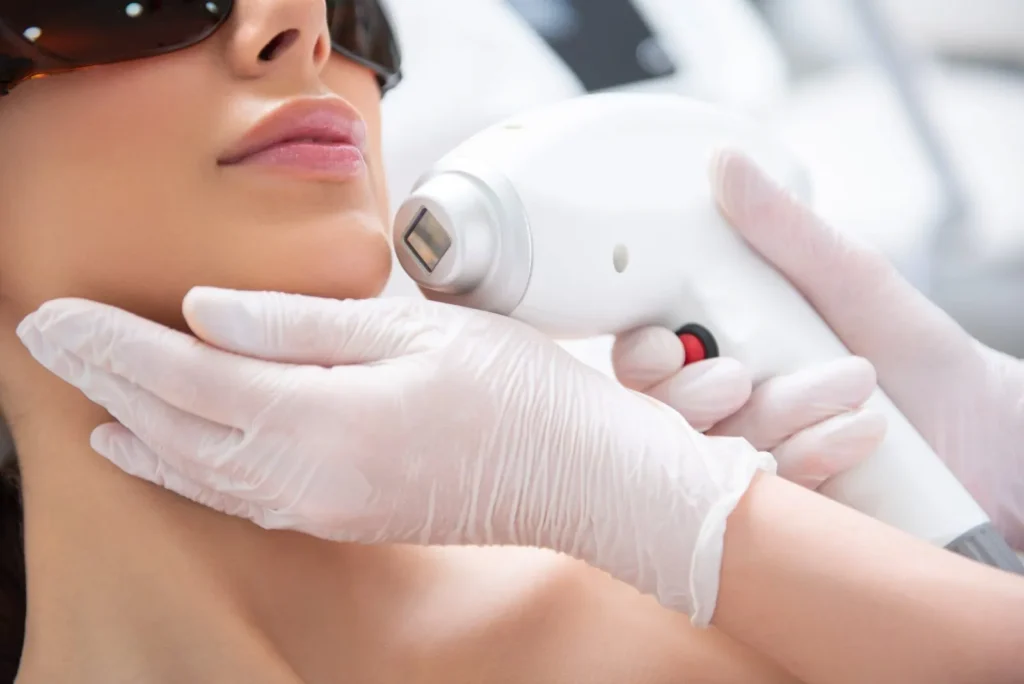Pico laser technology has become a go-to solution in South Korea for treating stubborn pigmentation, melasma, sun spots, and acne scars. Known for its precision, minimal downtime, and effectiveness on Asian skin types, the Pico laser is now a standard treatment in top Korean dermatology clinics. But what exactly happens during a Pico laser pigmentation treatment? Let’s break down the entire process, step-by-step, as practiced by leading Korean skin specialists.
What Is Pico Laser?
Pico laser (short for picosecond laser) emits ultra-short pulses of energy in trillionths of a second. This rapid-fire energy breaks down unwanted pigment into extremely tiny particles, which are then naturally eliminated by the body’s lymphatic system. It also stimulates collagen production—making it a dual solution for pigmentation and skin rejuvenation.
Step-by-Step Procedure of Pico Laser Pigmentation Treatment in Korean Clinics
1. Comprehensive Skin Consultation
The process starts with a detailed skin analysis and consultation. Korean dermatology clinics typically use advanced imaging systems such as VISIA or OBSERV to assess:
- Types of pigmentation (sun spots, melasma, post-inflammatory hyperpigmentation)
- Skin tone and sensitivity
- Depth of pigmentation
- Presence of acne or scars
This tailored approach allows doctors to choose the right wavelength and settings for the Pico laser treatment.
2. Cleansing and Skin Preparation
After the consultation, a trained aesthetician performs a thorough double cleansing routine, followed by the application of:
- Degreasing solution (to remove oils)
- Topical numbing cream (left on for 20–30 minutes)
This ensures minimal discomfort during the procedure.
3. Laser Treatment Begins
Once the skin is prepped and numb, the dermatologist begins the Pico laser treatment. Here’s what typically happens:
a. Targeted Pigmentation Pass
- A handpiece is used to deliver focused pulses directly on pigmentation spots.
- Common settings: 532 nm (for superficial pigmentation) or 1064 nm (for deeper pigment and melasma).
- Patients might feel a mild snapping or tingling sensation, similar to a rubber band.
b. Full-Face Rejuvenation Pass (Optional)
- Some clinics include a second, lower-intensity pass over the entire face.
- Helps with collagen stimulation, refining pores, and enhancing skin texture.
4. Post-Laser Cooling and Calming
Immediately after the laser, the skin may feel warm or appear slightly red. To calm the skin:
- Cooling mask or cryo device is applied.
- Growth factor serums or stem cell ampoules may be infused to speed up recovery.
- A soothing sheet mask may be placed to reduce redness.
5. Aftercare Instructions
Korean clinics are meticulous about aftercare. Patients are provided with a detailed guide, which typically includes:
- Avoid sun exposure and wear SPF 50+ daily.
- Gentle skincare only—no actives (like retinoids or acids) for at least 5–7 days.
- No hot saunas, workouts, or exfoliation for 48–72 hours.
- Apply recovery creams or CICA-based products (Centella Asiatica) to promote healing.
6. Follow-Up Treatments
Pigmentation often requires multiple sessions. Clinics usually recommend:
- 3 to 5 sessions spaced 3–4 weeks apart
- Regular skin reviews to track pigment breakdown and adjust laser settings
Why Korean Clinics Excel at Pico Laser Treatments
Korean dermatologists are globally recognized for their mastery of pigmentation treatment, especially on Fitzpatrick skin types III–V, which are more prone to PIH (post-inflammatory hyperpigmentation). Their strengths include:
- Precision diagnostics using high-resolution imaging
- Customized treatment protocols
- Integration of laser therapy with regenerative skincare (e.g., PRP, exosomes)
- Use of top-tier Pico laser brands like PicoSure, PicoPlus, and Discovery PICO
Final Thoughts
Pico laser pigmentation treatment is a highly effective, non-invasive way to achieve clearer, brighter skin—especially when done under the skilled hands of Korean dermatologists. With personalized care, advanced equipment, and a deep understanding of Asian skin, Korean clinics ensure safe and visible results from the first session.




